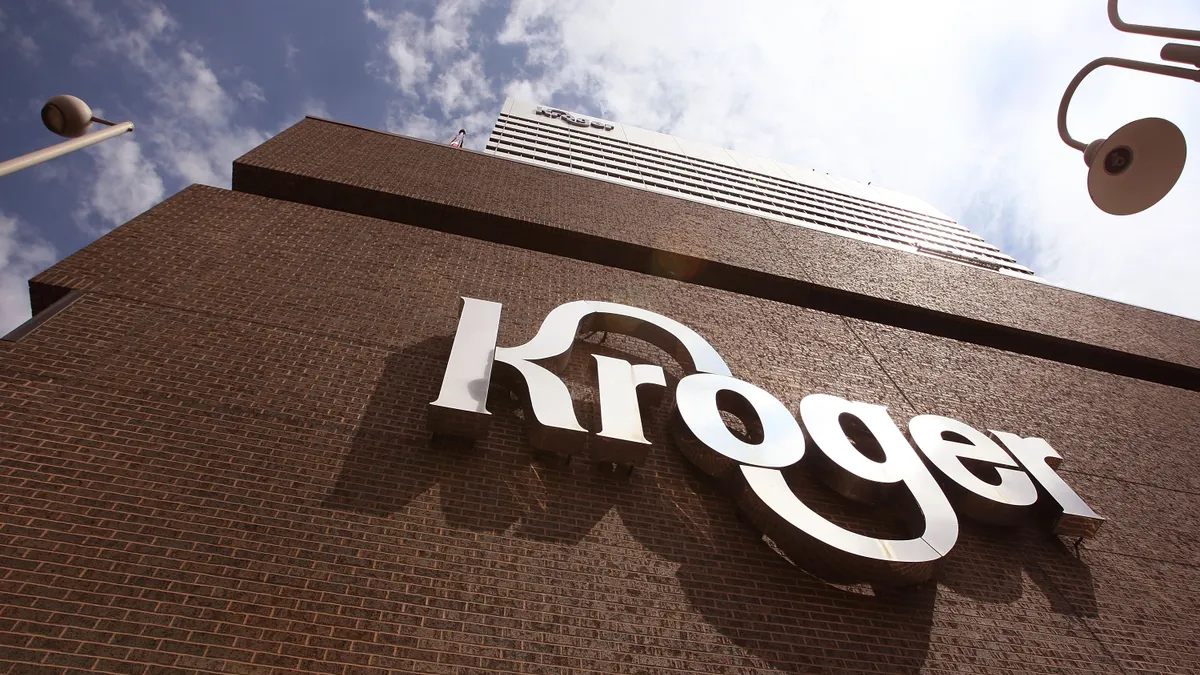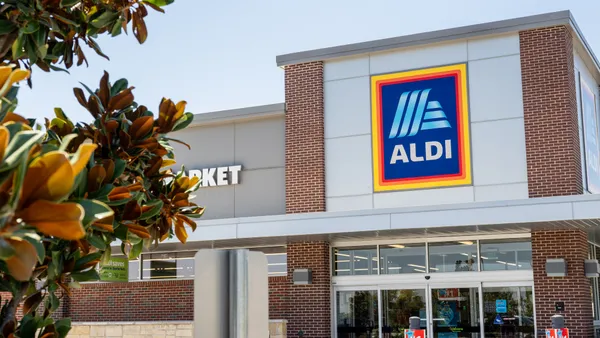Dive Brief:
- Kroger executives said Friday that the strength of the company’s omnichannel retailing ecosystem fueled better-than-anticipated results in the second financial quarter as shopper dollars shifted between stores and digital channels.
- Digital sales in the quarter fell 13%. However, “almost all” of the shoppers who reduced their online spending continued shopping in Kroger’s stores, CEO Rodney McMullen said during the company’s earnings call.
- Kroger’s comparable-store sales compared to the same period last year declined just 0.6%, while earnings per share reached 80 cents. Both figures beat Wall Street expectations. However, gross margins fell 60 basis points due to high shrink levels and supply chain costs.
Dive Insight:
Kroger executives have said in the past that the company is working toward becoming “channel agnostic” as shoppers shift more of their spending to digital. That omnichannel focus appears to be paying off so far, though there’s still considerable work ahead to make the channels equally profitable.
During the second quarter, Kroger shoppers toggled between online and in-store shopping as the pandemic evolved. At the beginning of the quarter, shoppers were visiting stores more frequently than they had early on in the health crisis. As the quarter progressed and the delta variant impacted regions across the country, many shoppers shifted back to e-commerce, said McMullen.
In many cases, Kroger was able to keep those shoppers within its shopping ecosystem, he noted. The company also added 340,000 new digital customers, which includes a significant number of shoppers in Florida, where Kroger recently began offering online shopping out of its automated fulfillment center.
“Kroger's seamless ecosystem is working,” McMullen said. “This was evident during the quarter as we saw customers seamlessly shift between channels.”
Kroger offers pickup and delivery from the vast majority of its stores and is scaling a ship-to-home service as well. The company reduced pickup wait times during the quarter, McMullen said, and also began trialing services like a ghost kitchen integration with Kitchen United and sushi delivery via DoorDash in three markets.
In-store shoppers gravitated toward fresh products and bulk sizes, executives noted. Identical sales increased year-over-year in produce, floral, bakery and deli, McMullen said. As many consumers revert to stock-up buying, Kroger is seeing higher sales of products like 24-pack toilet paper, he noted. Kroger also recently rolled out bulk-sized versions of some of its private label products, which McMullen said are selling well.
On Thursday, the company unveiled a new logo called "The Fresh Cart" that will be used across its store and digital properties.
While Kroger’s top-line sales beat Wall Street expectations, the company’s gross margins slid 60 basis points, causing its stock to fall 7% on Friday. McMullen said around half of that impact was due to shrink and higher supply chain costs.
Chief Financial Officer Gary Millerchip said Kroger is proactively managing both margin pressures, and that the company’s elevated full-year guidance, which calls for higher comp-store sales and earnings per share, reflects their impact. He also noted that Kroger continues to make improvements toward doubling its digital profitability via fulfillment efficiencies and higher digital media sales.
As the pandemic has worn on, supermarket operators like Kroger continue to enjoy sales that are well above their levels before the health crisis hit. Industry analysts have expressed skepticism about there being any long-term shifts to consumer behavior, but McMullen said the company’s research shows that elevated food-at-home spending is becoming entrenched. He pointed to the fact that more companies, including Kroger, are planning to allow employees to work from home even after the pandemic is over.
“A meaningful part of the trend change is really structural and sustainable and it's not just a one-time blip because of COVID,” McMullen said.










